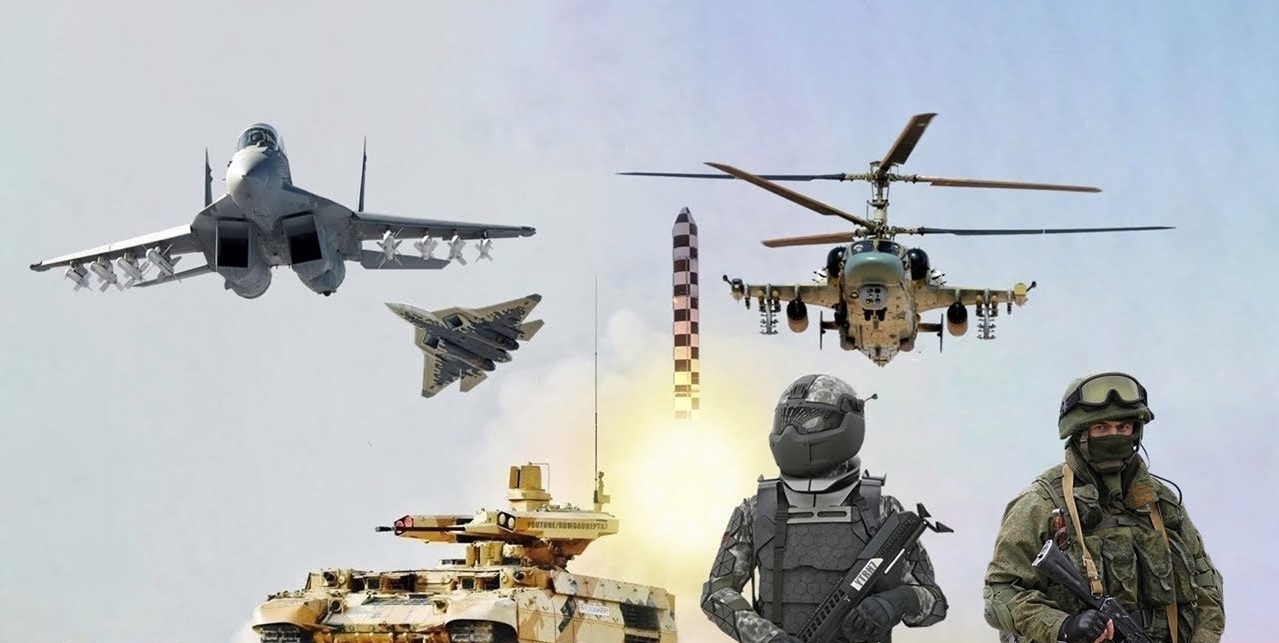Military modernisation alone cannot make an Armed Forces potent.
I cringe every time I hear that we need to ‘modernise’ our armed forces. That is because what is not ‘modern’ must be old, ancient, antiquated, obsolete or outdated. The Indian Armed Forces that I served for three and a half decades till very recently, does not deserve to be described by any of those antonyms of ‘modern’. Then why the clamour for ‘modernisation’? Are we talking of continually ensuring the capability to take on our adversaries? Is staying ahead of adversaries all the time in deployed technology the theme?
The atmosphere is saturated with all sorts of discussions on the need for military modernisation. The concept has seen it all. It has been discussed, analysed, dissected, lamented, celebrated, rejected, doubted et al. All the purported villains in the way of its successful realisation too have been ‘identified’, vilified, derided or threatened. Various Governments down the line, the Bureaucracy, our diplomacy, Government R&D agencies, the military themselves, unsteady and inadequate budgetary support, lack of industrial base, lack of technology, lack of private enterprise, lack of a strategic view etc have all figured in this some time or the other.
Taking a closer look, is it ‘military modernisation’ that we want? Are there inherent traps in the choice of words? Traps that would forever condemn us to not getting what we want or not getting where we want to get? The ‘us’ and ‘we’ in the above sentence being Indians.
What ‘Modernisation’ Aficionados would Say
The theme ‘Military Modernisation’ as ‘a long-pending dire need’ is so deeply entrenched into minds, that any questioning of the concept draws immediate fire. All sorts of questions will be asked, and all sorts of justifications made. Come on! Who wouldn’t want military modernisation? If you don’t modernise, won’t you become backward? Won’t you be left behind? Look what history shows us? See how ordinary bows and arrows and later, Crossbows, became redundant when Longbows entered the scene. In fact, the coming of the Longbow allowed England to become the dominant power in Europe for over 100 years. This happened as a result of the Battle of Crecy of 1346, where English Longbowmen prevailed over mounted French knights. The ferocious French knights would fall to English arrows much before they could get within striking distance using long spears or swords from atop their mounts.
As they pause to spot the degree to which their target has been converted, aficionados will not remember, that the dominance that Longbows brought to the English lasted only till 1453, when French cannons and handguns slaughtered the English Longbowmen. Six centuries ago, it took long for new technologies to unseat the older ones. Today, this could happen in a matter of hours.
Other lines of attack would follow. See what happened to even the most powerful Infantry when Elephants entered the scene? See how the steady march of technology has continually altered the paradigms of fighting down centuries. Leave all those old stories. Let us jump right to our (mostly future centric) present, they would say. See how the most formidable weapon systems on the ground today are vulnerable to lurking weaponised UAVs high up in the sky?
It is pointless to point out the fact that Elephants became helpless when they faced Artillery. That UAVs are easy fodder for any half-decent Anti-Aircraft weapon system, is not acknowledged. That even a disruption of communication or cyber-meddling could take the sting out of a weapon carrying UAV, is ignored.
What is modern today, isn’t modern tomorrow, because ‘modern’ is a relative term. The cycle of shifting superiority between competing sides will go on forever, for superiority in technology is not amenable to being monopolised by any entity.
What History Offers
Fortunately, history is replete with examples of how every military modernisation was rendered obsolete by counters that sprouted. Examples abound of ‘modern’ militaries biting the dust in the face of superior leadership, doctrines, tactics, brains, deceit, peculiarities of terrain, or even simple luck. As for counters, how quickly counters came up and how effective they were, depended simply on how badly the side looking to develop counters, wanted them. In times of war, or when war was imminent, counters would pop up in double-quick time. But history has other lessons too. The more ‘modern’ side is expected to be stronger than the other. But victories have not always gone to the stronger side. David and Goliath stories abound. We only have to see the failure of the mighty US, in Vietnam, Iraq and Afghanistan to get the drift.
It is not just ‘modernity’ in fighting machines that matter. Even in the face of numerical superiority, when even combined with modern fighting machines, inferior forces have succeeded. The Franco Spanish Fleet of 41 ships that lost against the 33 ship Fleet of Nelson at Trafalgar in 1805 presents one example. So does, the failure of Admiral Jellicoe to register a conclusive win against a definitely inferior German Fleet in the Battle of Jutland. So then, where does this take us?
A Signalling Problem
It is an established fact that the Indian Armed Forces are capable of taking on their operational challenges, especially if they are left alone to focus their energies and resources, on their actual charter. Any extraneous task that goes beyond its charter needs to be completed quickly, so that focus can return to core responsibilities. Any protracted involvement in non-core areas is harmful. The Armed Forces exist in a paradox. They are preparing all the time for an exam, hoping that the exam never gets scheduled. Taking subsidiary exams does not help in any way in facing the main exam. That said, there is a signalling problem to handle. What is meant as an appeal for national support in developing capabilities current enough to ace the enemy, must not end up conveying wrong perceptions among our own and the enemy. Wrong perceptions can lower their own morale and elevate their enemies.
Nations, not Militaries, go to War
Chaotic democracies often forget that it is the whole country that goes to war, and not just the Armed Forces. Why I reserve this comment for democracies is because, in autocracies, no one is allowed to think anyway. The Armed Forces are not some national team in a sporting duel. War, is one area, where failure, though a possibility, is not an option. Since the entire nation goes to war, every organ of the nation should be involved in preventing or fighting a war. There is a place for defence and offence for even the strongest power in the world. Any country faced with adversaries must arrive at their National Military Objectives and then, based on the resources available, decide on the overall path to take towards conflict resolution, assigning responsibilities to every arm of the state. Thus, capacity building for the Armed Forces is just one part of the solution.
Getting it Right
Several factors are salient while working towards finding the best solution for capacity building and force structuring, that ensures meaningful warfighting capabilities. Defining what modernisation must mean, is important. Military modernisation is achieved through fresh inductions as well as periodic upgrades. There are fundamental problems that afflict both these processes, which are revealed by a closer look at any one of them. Let us take upgrades as an example.
Most military equipment, mainly platforms, undergo two types of ‘modernisation’. One is a rejuvenation of its body parts, hardware etc, which would suffer degradation from use and the effects of age. This is akin to the denting, painting kind of jobs on a car, which happen maybe once during the lifetime of a car. In a warship or a big aircraft, with a designed age of say, 25 to 35 years, this process needs to happen once or twice during its lifetime. Let us take the example of a large aircraft with a designed age of 30 years. This aircraft would need a ‘Mid Life Upgrade’ in its 15th year to its airframe, control surfaces, controls, shafting, gearing and such parts that would have suffered wear and tear. This will ensure that the aircraft remains healthy till the end of its designed life.
The other essential part of keeping a platform or equipment healthy and useful is up-gradation of its electronics, sensors, weapons, software etc. The Govt of India officially allows automatic classification of electronics that has lived 10 years, as obsolete. That means plans can automatically be made for their replacement in the 10th year, without pursuing approvals. Therefore, for an aircraft with a designed life of 30 years, this part of it’s ‘Mid Life Upgrade’ would happen twice during its life. This process makes the aircraft capable of catching up with the world, and even going ahead of it. But it is just a matter of time, that the enemy too does their own upgrade, that could unseat our recently upgraded aircraft from its position as numero uno in ‘modernity’.
While sensors, software etc can also be upgraded in the same fashion, it may not be possible for every weapon to be upgraded. This is because a platform’s ability to carry and deploy weapons is dependent on the dimensions, weights etc of the weapon as well as the location or capacity of internal storage spaces, or external hardpoints on the platform. The only way to ensure a smooth weapon upgrade is to design and develop the necessary weapons well in time for them to be available for use at the time of the upgrade.
There are other challenges to upgrading weapons and sensors. There is the need to figure out the kind of threat they should be capable of overcoming in their lifetime. This calls for an elaborate analysis of where the enemy is headed and any study can at best throw up only moderately accurate answers. There is the need to figure out the degree to which forewarning or information is required against every relevant target for a sensor. There is also the need to figure out upgrades being pursued by the enemy to their equipment. With all this, there is no surety that at the end of an ‘upgrade’ ascendancy is achieved over the enemy.
An overarching consideration in the Force Building/ Capacity Creation process is the costly, time-consuming requirement of building the necessary administrative structures and the infrastructure needed to take on Training, Maintenance and Logistic requirements that will sprout with every new induction. Since these consume a lot of our resources, there is prudence in choosing the technology as well as the equipment required for every planned upgrade well in advance, so that the system can get around to acquiring it.
Getting There
There is another challenge with respect to the length of time required, for any new thought to materialise into physical equipment on the ground. In India, this period is typically a minimum of 10 years. This automatically necessitates early planning and freezing of the requirements for the next upgrade, well in time. As an example, since an aircraft might need its first upgrade of electronics in 10 years from its entry into service, and since it takes at least 10 years for the planning process to see fruition, hypothetically, the planning for the first upgrade must begin right at the time the aircraft enters service. This sounds ridiculous, because who knows what planning factors would be relevant for 10 years ahead and who would know what technology would be available 10 years ahead? This is where the need for telescoping the time taken from thought to action, into two or three years, stand out as a dire need. This is possible only if the country has the necessary technological, industrial and fiscal capabilities.
An example from the multi-country NH 90 programme of the erstwhile European Aeronautic Defence and Space Company (EADS), is interesting. By the time the aircraft, after its first flight in 1995 was ready for system integration around 2000, the required sensors had been developed, and their operational clearances completed, including that of a new low-frequency dipping SONAR. This kind of progress was possible because the countries involved in the project had, among them, the capability to conceptualise, design, develop, test and produce the technology and equipment they needed and the acquisition processes of the concerned Governments didn’t come in the way.
Need for Change
The prevailing malady echoed in the words of General Naravane, the Army Chief, at an event organised recently by CII and the Society of Indian Defence Manufacturers. According to the wide reporting on the event in the media on 22 Jan 2021, among other things, he remarked as to how procedures were holding ‘military modernisation’ hostage. He also said that “there are certain procedural lacunae in the procurement process, which primarily arise due to the overbearing nature of our rules and guidelines in trying to ensure zero error.” As per him, the problem “is also aggravated by our own interpretation of rules.” He while stating that India was still dependent on imports for several niche technologies, also admitted, that “considering the quick pace of defence modernisation undertaken by our adversaries, we are lagging behind slightly. The continuous and heavy dependence on equipment of foreign origin needs to be addressed in right earnest through indigenous capability development.”
Understandably, the reason behind extensive rulemaking and extra cautious rule interpretation that General Naravane refers to is brought on by the real-world requirements of our own brand of democracy. Under our circumstances, erring on the side of caution is a practical recourse for Governments. However, it is also true that any amount of procedural caution has not prevented any Government from getting stones cast at them. So, what do we do? And at what cost do we do what we do? Many manifestations are out there, crying for serious attention. For the Navy, MCMVs, Training ships, Multirole, as well as utility helicopters, are some of the longest pending ones.
What needs ‘Modernisation’
What really needs modernisation are many things beyond hardware. For instance, as a nation, the common man’s understanding of what really constitutes national security needs some ‘modernisation’. This is important because, in a true democracy, it is the aspirations of the common man that sets the narrative for domestic politics and this narrative is what throws up Governments. This process may also contribute to enhancing the understanding of national security among those involved in politics, bureaucracy, industry, R&D, HR development and academics. This understanding comes best, when the myriad aspects of national security are imbibed from senior school stage. No one can become an expert with a few briefings and some limited reading, after reaching a position of influence. The worldwide tendency to view national security primarily through the prism of military affairs, that existed in the period around the two World Wars, changed many decades ago. Today, national security is associated with anything that can rob a citizenry of their ability to lead a peaceful, day to day life, without the strife of any kind. So, anything that prevents internal turmoil too, is a mitigating factor that reduces national vulnerabilities, as any half-intelligent enemy would attempt to exploit internal problems, to further their agenda. Then there is the need to modernise mindsets that are still influenced by anything between the antiquated conflict of the World War era and the unproven, promise filled world of fast and furious ‘future’ wars, with Star Wars-like influence from Cyber, Space domains etc. There has to be a modernisation of administrative processes, especially capacity building procedures, that are made rather narrow by their being known as procurement procedures. Capacity building is way above procurement. There is also some requirement to curb the natural human propensity to do old things with new resources. That is a military modernisation of the mind.
Military Preparedness
The rhetoric of military modernisation has an inseparable cousin, which is military preparedness. In the common narrative, what is not modern, is not prepared. Nothing can be farther from reality. The military functions around a core of competence and adaptability to circumstances. The highest officer in uniform to the youngest soldier knows that all talk of what hardware the future promises to bring is of no use to man or beast when conflict occurs. Every moment, the military is prepared to fight, with what it has in its hands. They have no other option. Down history, it was not modernity brought on by technology that mostly ensured victory. It was mostly more human factors that helped prevail over an enemy. Inspired military leadership at all levels, relentless training with what was available at hand, high morale emanating from the confidence people in uniform had about their own competence, the inner strength that people gained from the conviction that they were engaged in fighting just conflicts and above everything else, their own raw courage, determination and sacrifice. The above set of attributes remain intact in us. We only need some modernisation in the atmosphere that surrounds this important constituent of national security. An atmosphere, where we all pull together, so that the ship that the state is, attains the security it desires and deserves.
Title Image Courtsey: https://www.youtube.com/watch
Disclaimer: The views and opinions expressed by the author do not necessarily reflect the views of the Government of India and Defence Research and Studies







